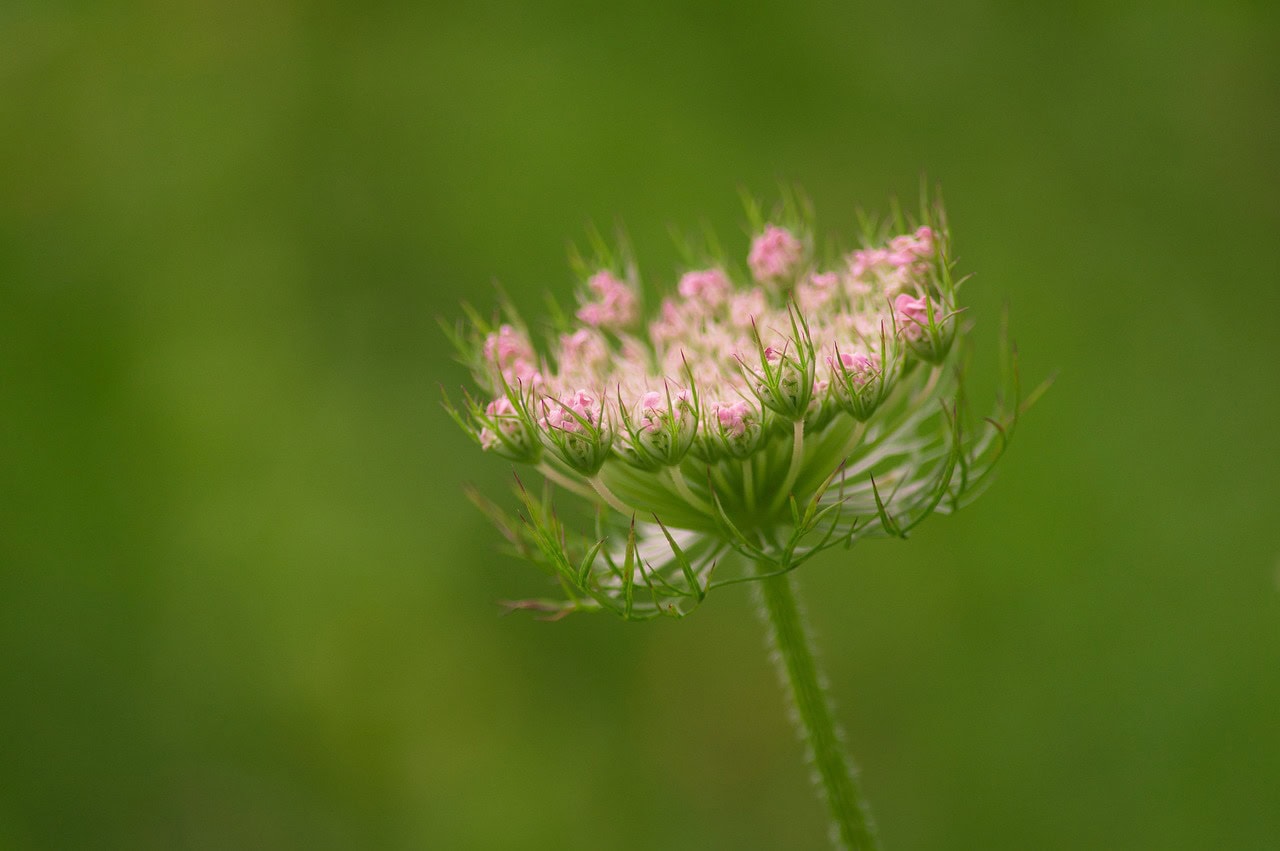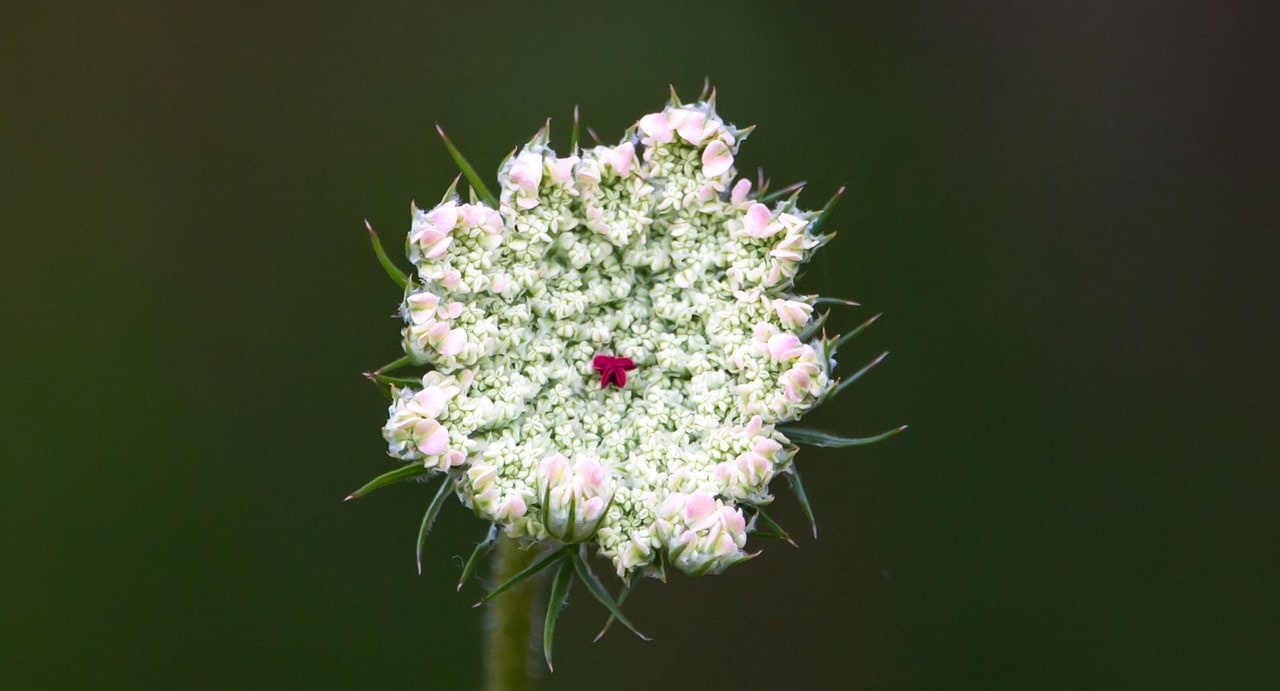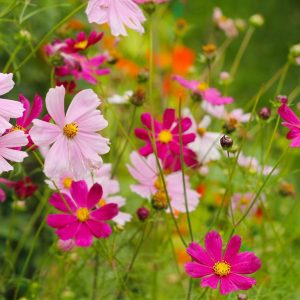WILD CARROT – DAUCUS CAROTA – 2 LITRE POT
This is our own wild carrot seed, harvested in the autumn and sown in the polytunnel during early spring. The seed is a little erratic to germinate, as with all our wildflowers here we tend to “leave ’em be” – they will come in their own sweet time. I love this Gorgeous feathery plant for the romance it gives to the pasture – always covered in pollinators including beetles it has a special place in the balance of this natural setting.
Looking similar to Ammi Majus, this lovely plant flowers for a significant time with an abundance of Umbel flowers which can be cut for a vase.
This delicate lacy plant IS an ancestor of our cultivated carrot and the young roots can be eaten – as they grow older they become fibrous.
Also called “Queen Anne’s Lace”, bird’s nest and bishop’s lace, they may be pink in bud and may have a reddish or purple flower in the centre of the umbel, The function of the tiny red flower, coloured by anthocyanin, is to attract insects.
Wild carrot plant is a great companion plant for lots of other plants including marigolds, tomato plants, onions, peppers, and lots of other plants. But wild carrot plants also make beautiful plants when planted alone also, with a pleasant fragrance.
Queen Anne’s Lace has a tradition of related stories historically in medicine and offers a range of benefits for both health and the garden ecosystem. Traditionally, it has been used as a diuretic and to alleviate various ailments, including digestive and respiratory issues. The plant contains beneficial compounds such as beta-carotene and antioxidants, which contribute to its medicinal properties.
In addition to its health benefits, this biennial plant is a valuable asset in gardens. It attracts beneficial insects like parasitic wasps, which help control pest populations, making it an excellent companion plant in mixed gardens.
Wild Carrot is now appreciated for its Beauty. Its delicate, lacy flowers and pleasant fragrance make it a beautiful addition to any garden, whether as a companion plant or a standalone ornamental.
£7.50






